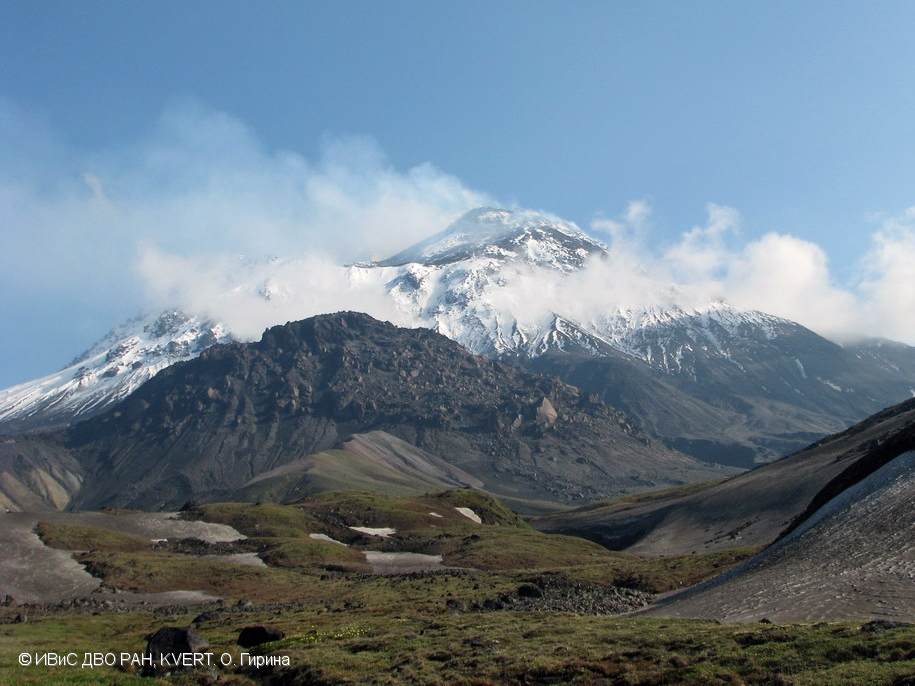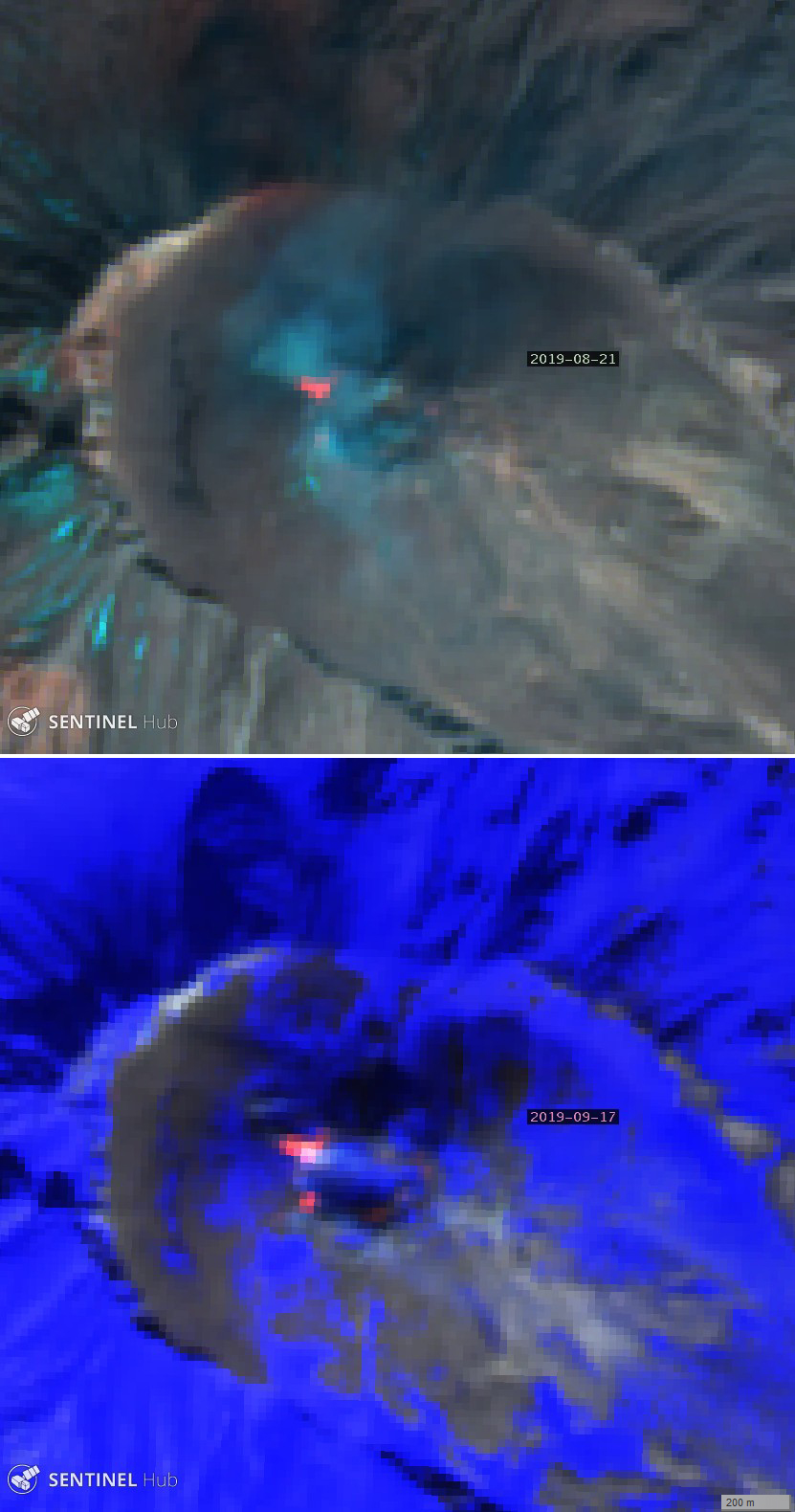Report on Bezymianny (Russia) — December 2019
Bulletin of the Global Volcanism Network, vol. 44, no. 12 (December 2019)
Managing Editor: Edward Venzke.
Research and preparation by Paul Berger.
Bezymianny (Russia) Lava dome growth, ongoing thermal anomalies, moderate gas-steam emissions, June-November 2019
Please cite this report as:
Global Volcanism Program, 2019. Report on Bezymianny (Russia) (Venzke, E., ed.). Bulletin of the Global Volcanism Network, 44:12. Smithsonian Institution. https://doi.org/10.5479/si.GVP.BGVN201912-300250
Bezymianny
Russia
55.972°N, 160.595°E; summit elev. 2882 m
All times are local (unless otherwise noted)
The long-term activity at Bezymianny has been dominated by almost continuous thermal anomalies, moderate gas-steam emissions, dome growth, lava flows, and an occasional ash explosion (BGVN 44:06). The volcano is monitored by the Kamchatka Volcanic Eruptions Response Team (KVERT. Throughout the reporting period of June to November 2019, the Aviation Colour Code remained Yellow (second lowest of four levels).
According to KVERT weekly reports, lava dome growth continued in June through mid-July 2019. Thereafter the reports did not mention dome growth, but indicated that moderate gas-and-steam emissions (figure 32) continued through November. The MIROVA (Middle InfraRed Observation of Volcanic Activity) volcano hotspot detection system, based on analysis of MODIS data, detected hotspots within 5 km of the summit almost every day. KVERT also reported a thermal anomaly over the volcano almost daily, except when it was obscured by clouds. Infrared satellite imagery often showed thermal anomalies generated by lava flows or dome growth (figure 33).
 |
Figure 32. Photo of Bezymianny showing fumarolic activity on 4 July 2019. Photo by O. Girina (IVS FEB RAS, KVERT); courtesy of KVERT. |
Geological Summary. The modern Bezymianny, much smaller than its massive neighbors Kamen and Kliuchevskoi on the Kamchatka Peninsula, was formed about 4,700 years ago over a late-Pleistocene lava-dome complex and an edifice built about 11,000-7,000 years ago. Three periods of intensified activity have occurred during the past 3,000 years. The latest period, which was preceded by a 1,000-year quiescence, began with the dramatic 1955-56 eruption. This eruption, similar to that of St. Helens in 1980, produced a large open crater that was formed by collapse of the summit and an associated lateral blast. Subsequent episodic but ongoing lava-dome growth, accompanied by intermittent explosive activity and pyroclastic flows, has largely filled the 1956 crater.
Information Contacts: Kamchatka Volcanic Eruptions Response Team (KVERT), Far Eastern Branch, Russian Academy of Sciences, 9 Piip Blvd., Petropavlovsk-Kamchatsky, 683006, Russia (URL: http://www.kscnet.ru/ivs/kvert/); Institute of Volcanology and Seismology, Far Eastern Branch, Russian Academy of Sciences (IVS FEB RAS), 9 Piip Blvd., Petropavlovsk-Kamchatsky 683006, Russia (URL: http://www.kscnet.ru/ivs/eng/); MIROVA (Middle InfraRed Observation of Volcanic Activity), a collaborative project between the Universities of Turin and Florence (Italy) supported by the Centre for Volcanic Risk of the Italian Civil Protection Department (URL: http://www.mirovaweb.it/); Sentinel Hub Playground (URL: https://www.sentinel-hub.com/explore/sentinel-playground).


